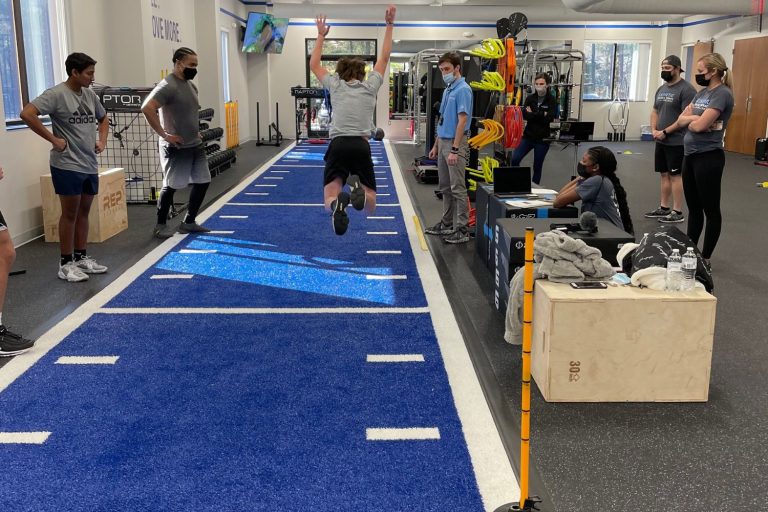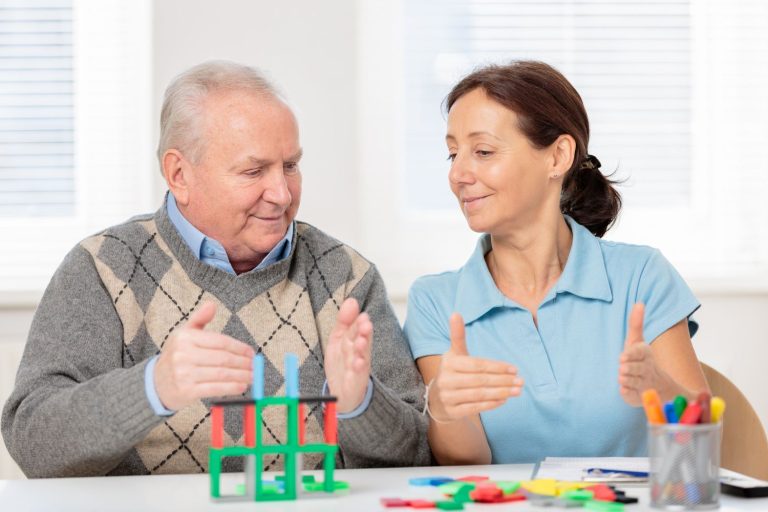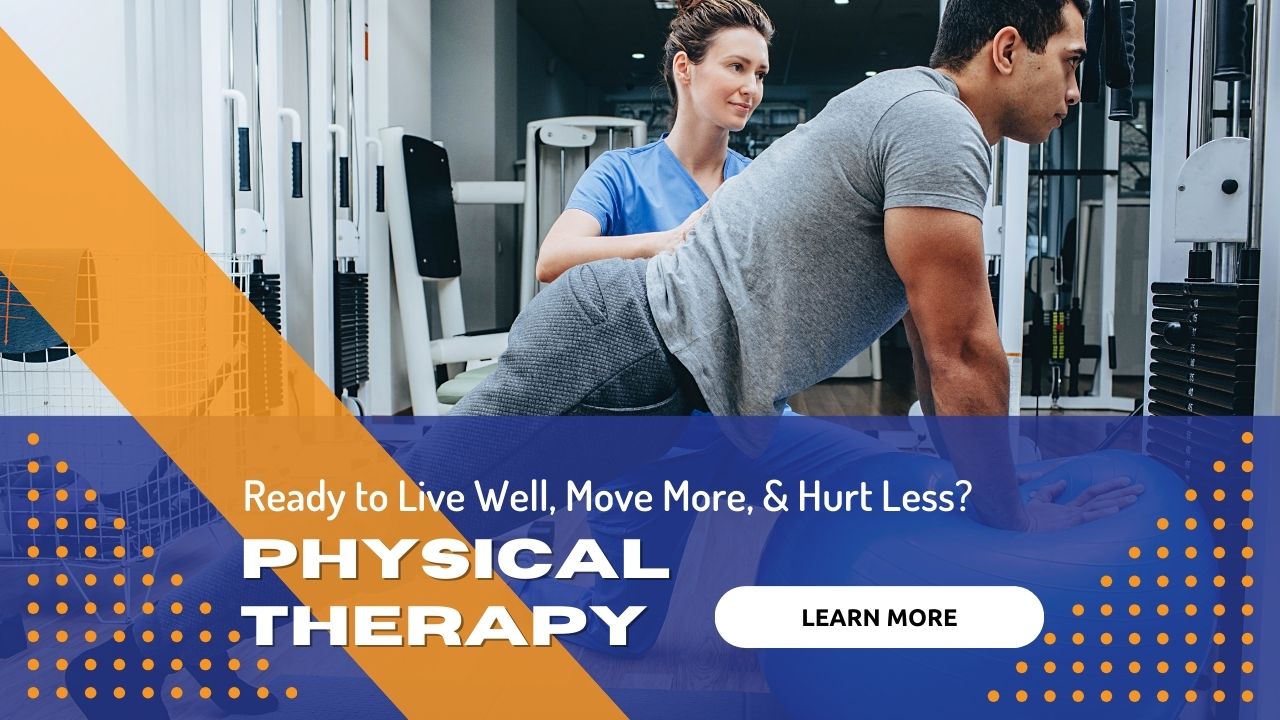

What Everyone Should Know About Pain
Did you know that there’s hope to your pain? Though the pain may feel unbearable and becoming pain-free unreachable, there’s still some more to be discovered! Here are some helpful educational tips that can give you a jump-start on your pain-free journey:
1. Pain is 100% produced by the brain
As crazy as it may sound, your brain produces the pain you feel. When you stub your toe against something, your sensory nerves send impulses to the brain, through your spinal cord. Your brain then perceives it as harm, and then sends “danger, danger!!” to your nerves; which then results in the pain sensation you feel. A great example is if someone was paralyzed from the waist down. If you jab a needle into their toe, they won’t feel any “pain”. Why? Because all nerve sensation in that area is no longer working. No brain, no pain. Simple right? Not quite.
2. Pain is NOT just physical, there are many other factors that come into play
This is a common misconception of pain. Your brain takes a lot of things into consideration before it decides on how to respond. Many factors should be evaluated, such as: your living conditions, eating habits, surrounding stressors that were present at the time of the painful encounter, emotional state, access to care, etc. When understanding pain, it’s always essential to view it holistically. If not, you would just be merely scratching the surface. Check out this video that explains all the possible contributing factors of pain.
3. Your emotional health can either help or “hurt” your pain
Your mood and stress levels play a huge role in your pain levels. Your brain cane make your body “over-react” in certain circumstances. But with emotional intelligence, the ability to identify and manage one’s emotions and the emotions of others, you have the ability to reduce your stress and ultimately calm your nervous system. Take a second and examine your life at this present moment. If you are experiencing any chronic pain, consider trying out some of these activities: stress management classes, daily meditation or yoga, breathing exercises or counseling. Or maybe even consider surrounding yourself with people who would be willing to do these activities with you. That way, you’re benefiting by not only engaging in these activities, but also building relationships with those around you. In almost anything, discovering deeper emotions can be a part of your healing process.
4. Pain doesn’t always necessarily mean danger or harm
Now don’t get me wrong, your pain is 100% real and pain is certainly a good warning system for the body. However, the harm implied by the pain may be under or over exaggerated. Some may ask, “well then, why does my brain produce pain in the first place?” Your brain is simply trying to protect you from what it perceives as danger. A great example, and I’m sure everyone can relate, is say if you made the decision to go to the gym everyday. After the first time, your body will feel super sore. Does that mean that there’s anything wrong? Not necessarily. Your body just isn’t used to this type of thing. But overtime, it will eventually adapt. In the wise words of pain scientist, Adriaan Louw, : “Just because I hurt, doesn’t mean I’m harmed. I’m sore, but I’m safe.” Check out this video of Adriaan Louw going into greater depth of this concept.
5. Pain is subjective; we all experience pain differently, even with the same condition
Everyone’s brain differs in some way, even in the slightest way. So, if pain originates from the brain, then that means everyone’s pain tolerance differs. As stated before, with pain, it’s important to consider the surrounding factors, such as: family concerns, parenting responsibilities, job trouble, etc. Everyone’s life experiences are different. Some may say: “well, they had the same injury as me, and they’re fine, so there must be something wrong!”, right? Wrong. Remember, your pain experience is different from anyone else’s.
6. Though very helpful, MRIs can often be misleading
MRIs are an incredible innovation that have helped healthcare professionals for decades. But even with this, they should not be the end-all-be-all. Often times, MRIs may look severe, but sometimes it’s just due to age progression. When you see something odd on your MRI, work together with your local physician and physical therapist, in order to determine if the image on the MRI is the actual cause of your present pain. Then discuss what necessary actions you need to take or if you need to do anything at all. Long story short: just because the MRI machine looks fancy, doesn’t mean that it is conclusive by itself. An should always be paired with a clinical examination.
7. It’s not ironic that the older you get, the more painful encounters you have
As you grow older, your body is more susceptible to pain encounters. That’s just the way our bodies naturally operate. Countless studies show how certain diseases and illnesses are far more susceptible in older adults compared to teenagers and children. As stated before, stressors play a role too; and with increased age comes increased responsibility. Just to name a few stressors that come as you get older: bills, parenthood, pursuing a degree, career, taxes, etc. But even still with all of this, you have the power to overcome these stressors and to avoid many possible encounters with pain! Just tackle them one at a time.
8. Prescription painkillers and over-the-counter drugs are NOT the only solution for chronic pain
Although these are great and necessary in some cases, often times there are other easy, and cheap, solutions to your pain. Other ways include: physical therapy, massage therapy, light aerobic exercise, maintaining a healthy diet, or having good sleep patterns. Consider long term solutions for reducing your pain outside of just pain medications.
9. The more you understand about your pain, the less pain you have
Your brain is always excited to learn and retain new information. Health education plays a major role in regards to pain, or any health issue for that matter. Some may feel like it’s not beneficial or necessary to thoroughly educate themselves on all of this until they actually feel pain; but wellness and prevention is much more valuable than just treatment. Wellness and prevention helps you to get a “head-start” for what could occur and prevent the worst predicaments. When your understanding of pain increases, then your brain is less sensitive to perceived threats, which results in your pain decreasing. You can’t just think all of your pain away but it does help. Just think, you’ve already started just by reading this blog, way to go! Here’s an awesome video by pain scientist, Lorimer Meseley, on “Why Things Hurt” to learn more.
Guest blogger:
Gloria Ufot, Community Health and Marketing Coordinator
Please Share
categories
Recent Posts
categories

What Everyone Should Know About Pain
Did you know that there’s hope to your pain? Though the pain may feel unbearable and becoming pain-free unreachable, there’s still some more to be discovered! Here are some helpful educational tips that can give you a jump-start on your pain-free journey:
1. Pain is 100% produced by the brain
As crazy as it may sound, your brain produces the pain you feel. When you stub your toe against something, your sensory nerves send impulses to the brain, through your spinal cord. Your brain then perceives it as harm, and then sends “danger, danger!!” to your nerves; which then results in the pain sensation you feel. A great example is if someone was paralyzed from the waist down. If you jab a needle into their toe, they won’t feel any “pain”. Why? Because all nerve sensation in that area is no longer working. No brain, no pain. Simple right? Not quite.
2. Pain is NOT just physical, there are many other factors that come into play
This is a common misconception of pain. Your brain takes a lot of things into consideration before it decides on how to respond. Many factors should be evaluated, such as: your living conditions, eating habits, surrounding stressors that were present at the time of the painful encounter, emotional state, access to care, etc. When understanding pain, it’s always essential to view it holistically. If not, you would just be merely scratching the surface. Check out this video that explains all the possible contributing factors of pain.
3. Your emotional health can either help or “hurt” your pain
Your mood and stress levels play a huge role in your pain levels. Your brain cane make your body “over-react” in certain circumstances. But with emotional intelligence, the ability to identify and manage one’s emotions and the emotions of others, you have the ability to reduce your stress and ultimately calm your nervous system. Take a second and examine your life at this present moment. If you are experiencing any chronic pain, consider trying out some of these activities: stress management classes, daily meditation or yoga, breathing exercises or counseling. Or maybe even consider surrounding yourself with people who would be willing to do these activities with you. That way, you’re benefiting by not only engaging in these activities, but also building relationships with those around you. In almost anything, discovering deeper emotions can be a part of your healing process.
4. Pain doesn’t always necessarily mean danger or harm
Now don’t get me wrong, your pain is 100% real and pain is certainly a good warning system for the body. However, the harm implied by the pain may be under or over exaggerated. Some may ask, “well then, why does my brain produce pain in the first place?” Your brain is simply trying to protect you from what it perceives as danger. A great example, and I’m sure everyone can relate, is say if you made the decision to go to the gym everyday. After the first time, your body will feel super sore. Does that mean that there’s anything wrong? Not necessarily. Your body just isn’t used to this type of thing. But overtime, it will eventually adapt. In the wise words of pain scientist, Adriaan Louw, : “Just because I hurt, doesn’t mean I’m harmed. I’m sore, but I’m safe.” Check out this video of Adriaan Louw going into greater depth of this concept.
5. Pain is subjective; we all experience pain differently, even with the same condition
Everyone’s brain differs in some way, even in the slightest way. So, if pain originates from the brain, then that means everyone’s pain tolerance differs. As stated before, with pain, it’s important to consider the surrounding factors, such as: family concerns, parenting responsibilities, job trouble, etc. Everyone’s life experiences are different. Some may say: “well, they had the same injury as me, and they’re fine, so there must be something wrong!”, right? Wrong. Remember, your pain experience is different from anyone else’s.
6. Though very helpful, MRIs can often be misleading
MRIs are an incredible innovation that have helped healthcare professionals for decades. But even with this, they should not be the end-all-be-all. Often times, MRIs may look severe, but sometimes it’s just due to age progression. When you see something odd on your MRI, work together with your local physician and physical therapist, in order to determine if the image on the MRI is the actual cause of your present pain. Then discuss what necessary actions you need to take or if you need to do anything at all. Long story short: just because the MRI machine looks fancy, doesn’t mean that it is conclusive by itself. An should always be paired with a clinical examination.
7. It’s not ironic that the older you get, the more painful encounters you have
As you grow older, your body is more susceptible to pain encounters. That’s just the way our bodies naturally operate. Countless studies show how certain diseases and illnesses are far more susceptible in older adults compared to teenagers and children. As stated before, stressors play a role too; and with increased age comes increased responsibility. Just to name a few stressors that come as you get older: bills, parenthood, pursuing a degree, career, taxes, etc. But even still with all of this, you have the power to overcome these stressors and to avoid many possible encounters with pain! Just tackle them one at a time.
8. Prescription painkillers and over-the-counter drugs are NOT the only solution for chronic pain
Although these are great and necessary in some cases, often times there are other easy, and cheap, solutions to your pain. Other ways include: physical therapy, massage therapy, light aerobic exercise, maintaining a healthy diet, or having good sleep patterns. Consider long term solutions for reducing your pain outside of just pain medications.
9. The more you understand about your pain, the less pain you have
Your brain is always excited to learn and retain new information. Health education plays a major role in regards to pain, or any health issue for that matter. Some may feel like it’s not beneficial or necessary to thoroughly educate themselves on all of this until they actually feel pain; but wellness and prevention is much more valuable than just treatment. Wellness and prevention helps you to get a “head-start” for what could occur and prevent the worst predicaments. When your understanding of pain increases, then your brain is less sensitive to perceived threats, which results in your pain decreasing. You can’t just think all of your pain away but it does help. Just think, you’ve already started just by reading this blog, way to go! Here’s an awesome video by pain scientist, Lorimer Meseley, on “Why Things Hurt” to learn more.
Guest blogger:
Gloria Ufot, Community Health and Marketing Coordinator
Please Share









